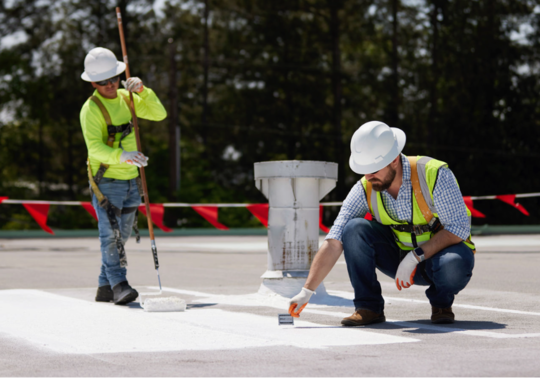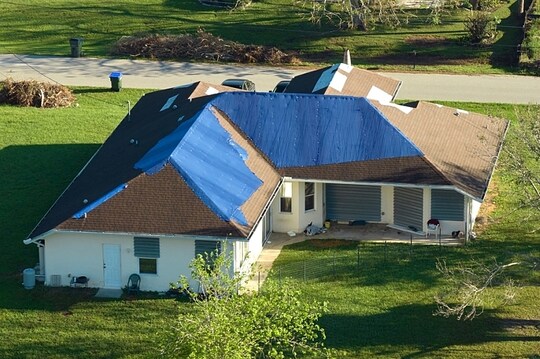
Techos residenciales
Productos de ventilación de GAF: hechos por una planta dedicada con un equipo de expertos
Como contratista de techado, comprendes la importancia de la ventilación adecuada. Sin un flujo de aire adecuado, un hogar se enfrenta a un mayor riesgo de daños por calor y humedad, moho y formación de diques de hielo en el invierno. Todos estos riesgos pueden obstaculizar el desempeño del techo al causar deterioro prematuro. Los productos de ventilación posibilitan que el ático de un hogar capte aire fresco y facilitan la salida del aire cálido y húmedo, lo cual es una función esencial para el desempeño óptimo del sistema de techo. Para lograr un flujo de aire equilibrado para un hogar, deben elegirse los productos de ventilación adecuados. No todas las soluciones de ventilación funcionan para cada hogar, por lo que es importante seleccionar el respiradero adecuado al estilo de techo. La calidad y el desempeño también son importantes, motivo por el cual no hay un mejor equipo que las personas dedicadas que se esfuerzan todos los días por fabricar la línea completa de productos de ventilación para ático Master Flow™ y accesorios para el techo en el pequeño pueblo de Burgaw, North Carolina. Conoce la familia de la planta de fabricación de Burgaw Burgaw fue fundado en 1879 como un pueblo ferroviario y es conocido por su encanto como pueblo pequeño, repleto de rostros amigables y familias con profundas raíces en la comunidad. El pueblo es conocido por su festival anual del arándano, que atrae a miles de personas a la zona para celebrar los arándanos que se cultivan en los condados circundantes. No obstante, para quienes viven allí todo el año, es el hogar de la instalación de fabricación de GAF, que brinda oportunidades laborales y sustento para muchos de los residentes del pueblo. De hecho, GAF emplea a 250 personas en este pueblo de tan solo 3,000 habitantes, por lo que contribuye de forma significativa a la economía y a la comunidad local. Uno de esos miembros de la familia de GAF de Burgaw es Steve Boehling, gerente general de GAF de Burgaw, quien explica que la compañía ha estado fabricando productos de ventilación allí desde principios de la década de 1990. A lo largo de los años, el equipo ha producido miles de productos premium de GAF, y la planta se ha convertido en un pilar de la comunidad circundante. "La planta se construyó en 1994, y GAF compró la instalación en 1998", afirma Boehling. "Es una instalación grande, de alrededor de 400,000 pies cuadrados, que emplea a alrededor de 250 personas". En un pueblo con una población de poco más de 3,000 habitantes, ha tenido un gran impacto en las vidas de la comunidad local. Boehling describe la planta como "una gran familia de GAF", con personas que han hecho toda su carrera profesional allí. "Estamos muy involucrados en esta comunidad. Tenemos empleados que han trabajado en esa instalación desde su apertura, lo que es un fiel reflejo del tipo de cultura que hemos creado", explica. "Las personas no hacen eso si están a disgusto con su compañía. Las personas desarrollan su vida aquí". Todd Christiansen, vicepresidente de ventas de Master Flow™ en GAF, se hace eco de este sentimiento: "Como uno de los líderes de la instalación de fabricación de GAF en Burgaw, me enorgullezco del impacto positivo que generamos todos los días, no solo por los productos que fabricamos y entregamos al mercado, sino también por los medios de subsistencia que apoyamos y las comunidades locales que fortalecemos". Soluciones Master Flow™ de GAF: hechas con orgullo y precisión La planta de GAF en Burgaw fabrica todas las soluciones Master Flow™ de la compañía, que incluyen ventilaciones mecánicas y accesorios para el techo, como tapajuntas para funda de tuberías Pivot™. El diseño totalmente metálico de este producto es estéticamente atractivo y brinda una protección superior; puede soportar lluvia impulsada por el viento de 110 mph y cuenta con resistencia a los impactos UL2218 clase 4. Christiansen explica que la planta también produce Tapas Versa Master Flow™, que son ideales para conductos de chimeneas y pilas calientes. Estas soluciones de ventilación Master Flow™ son fabricadas con precisión por artesanos hábiles en la planta, quienes consideran al pequeño pueblo de Burgaw su hogar. Muchos miembros del equipo han hecho toda su carrera profesional allí y se enorgullecen de la contribución que hace su pueblo para ayudar a proteger lo más importante. El equipo de producción comprende la importancia de la ventilación en los sistemas de techos, y sus miembros se entusiasman al hablar acerca de los productos que producen, especialmente cuando observan que están ayudando a los contratistas a encontrar las soluciones de ventilación adecuadas para sus clientes. Entre todos los productos fabricados en la planta de Burgaw, uno de los más populares para profesionales de techo es la rejilla para techos con dorso superinclinado Master Flow™ SSB960. El respiradero posibilita la salida de calor y humedad del ático, y funciona bien en techos con líneas de caballete limitadas. Su diseño de dorso inclinado protege contra condiciones climáticas rigurosas, y se ofrece en diversos colores para complementar las tejas elegidas para el techo. "La rejilla con dorso superinclinado es la más popular en el ámbito de los contratistas", asegura Christiansen. "Te proporciona 60 pulgadas cuadradas de área libre neta (NFA), que constituye alrededor de un 20 % más en comparación con otras marcas. Es una buena solución para cualquiera que busque ventilar con el flujo natural del aire". Quienes buscan soluciones de ventilación mecánica pueden confiar en los respiraderos para ático mecánicos serie ERV Master Flow™. Christiansen explica que poner el foco en componentes de calidad y seguridad es lo que diferencia esta línea de productos de las ofertas de los competidores. "Usamos un motor mejorado para todas nuestras unidades, no solo las de alta gama", observa. "También contamos con garantías relacionadas con la seguridad, que incluyen suavizar el domo de la unidad para que, si alguien la toma por el domo, los bordes no queden tan filosos". Asimismo, Christiansen destaca que los respiraderos serie ERV usan un sistema de soporte de más alta calidad en comparación con otros modelos en el mercado, lo que evidencia el compromiso del equipo de Burgaw de brindar los productos de la más alta calidad. Recientemente, GAF también reforzó su línea de ventilación mecánica con el lanzamiento de distintos modelos, como el respiradero Master Flow EZ Cool™, que puede enchufarse en un tomacorriente estándar de 110 voltios; esto elimina la necesidad de un electricista en el sitio durante la instalación. Experimentación de la diferencia de Master Flow™ Además del desempeño y la calidad superiores, los productos de Master Flow™ se destacan porque son elegibles para la cobertura en virtud de las garantías residenciales mejoradas de GAF. "Al instalar un sistema de techo completo, lo mejor es que todos los componentes provengan del mismo fabricante", indica Christiansen. "Tener que hacer solo una llamada telefónica da mucha tranquilidad a los propietarios". Al fabricar su propia línea de soluciones de ventilación, GAF tiene control sobre la calidad, el desempeño y el servicio al cliente inherentes a los productos. No obstante, eso no sería posible sin un equipo talentoso y muy hábil en Burgaw que respalda la producción de estas soluciones. ¿Tienes curiosidad por ver la línea completa de productos que se fabrican en la planta de North Carolina? Explora la página de accesorios para techo de GAF para obtener más información.
Por Karen L Edwards
26 de noviembre de 2024







